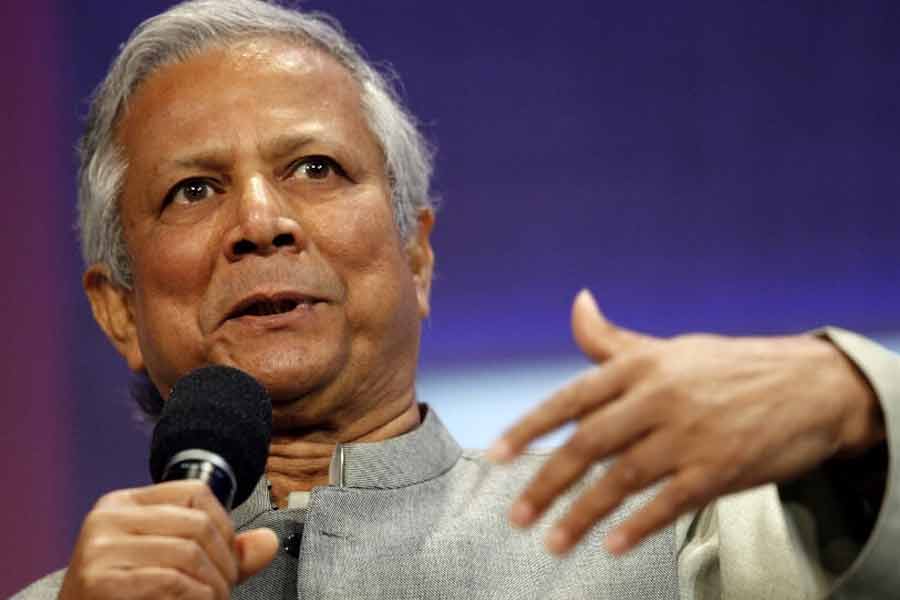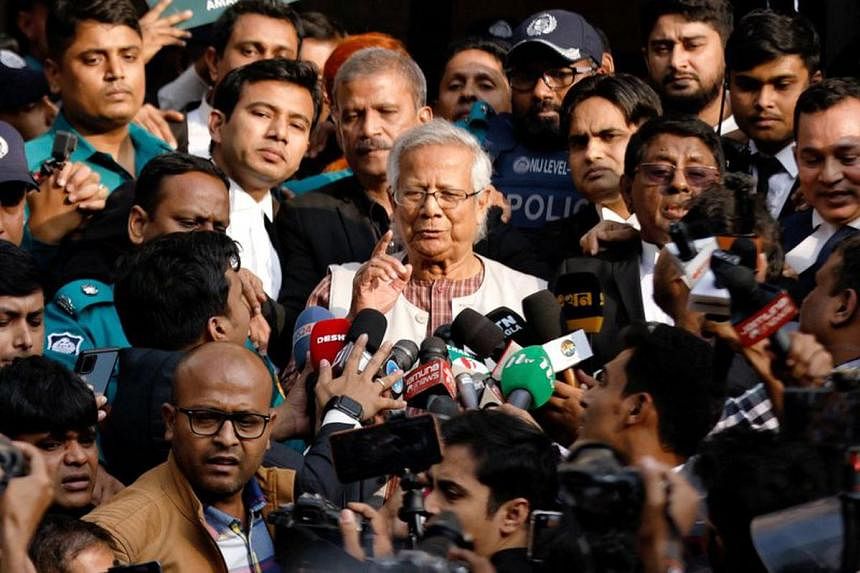For years to come, its violent dissolution will loom large in the Armenian consciousness and reverberate across other majority-minority conflicts around the globe

On January 1, 2024, the Nagorno-Karabakh Republic (NKR), the entity at the heart of the Armenian-Azerbaijani conflict, ceased - officially - to exist. The self-proclaimed republic's last leader, Samvel Shahramanyan, mandated its dissolution in a decree of September 28, 2023 that was a condition of the ceasefire ending Azerbaijan's lightning military operation to crush the NKR on September 19-20.
The existence of a second Armenian republic in Karabakh, which to the end remained unrecognized by any United Nations member state including Armenia, had been the single most divisive issue between Armenians and Azerbaijanis since it first appeared. Its very existence went straight to the heart of the "meta-conflict": the conflict over what the Armenian-Azerbaijani conflict is really about.
In ways that echo Zionism's subsuming of conflict in Palestine into a wider conflict with Arabs, Azerbaijan has consistently sought to fold its conflict with the Armenian population in Karabakh into a wider irredentist framework with Armenia. In this reading there is, and has never been, a real conflict in Karabakh, only external interference. In Azerbaijani perspectives, the NKR was nothing more than a puppet regime, a stalking horse for annexation and no different from the Russian-created "people's republics" in eastern Ukraine.
Conversely, Armenia consistently sought to downplay its role in the conflict and to depict the NKR as one of its principals. For years visitors to the Armenian Ministry of Foreign Affairs would be shown a facsimile of the May 12, 1994 ceasefire agreement featuring three signatories - Armenia, Azerbaijan and the NKR - thereby asserting the latter's agency. Armenian sources frequently referred to the "Artsakh-Azerbaijan conflict," evoking an Armenian name for the area dating back to antiquity that underlined the longevity of the Armenian claim independent of modern state-territorial arrangements.
Between these opposed visions, a tradition of scholarship sought to understand the NKR as an example of a "de facto state": a secessionist entity with a permanent population and fixed borders that is nevertheless not recognized as a state by other states. De facto states can be understood as a product of the very system that excludes the possibility of their existence: the post-Second World War and post-colonial system of sovereign and equal states covering every centimeter of the globe.
The hegemony of this system, at least until recent years, is what created the possibility of a de facto state as an anomaly existing outside of it - or in Alexander Iskandaryan's memorable phrase, as "temporary technical errors within the system of international law." The Soviet and Yugoslav collapses resulted in the emergence of numerous such entities, several of which, including Abkhazia, Transdniester, South Ossetia and the NKR, survived in the margins of international relations for decades despite non-recognition.
A historical tradition
The independence of the NKR was proclaimed by a joint meeting of the regional soviets (councils) from the Nagorno-Karabakh Autonomous Oblast (NKAO) and Shahumyan region to its north on September 2, 1991. It followed Azerbaijan's declaration of independence two days earlier, itself a response to the failed putsch in Moscow and the now universal realization that the Soviet Union would soon be no more.
Sovereignty as a separate entity, however, was never the goal of the Karabakh movement, whose aim was instead unification with Armenia - miatsum in Armenian. This was not a new phenomenon in the late 1980s, but a long-standing aspiration going back to the First World War era and the formation of new Armenian and Azerbaijani republics in the aftermath of the collapse of the Russian Empire.
Following large-scale violence in 1920 contesting Azerbaijani control over Karabakh, the incoming Bolsheviks established the NKAO in 1923 within Soviet Azerbaijan essentially as a conflict resolution mechanism. The NKAO recognized the state of play (Azerbaijani control) but sought to balance that with a compensatory autonomy for the Karabakh Armenian population.
It did not work out that way in practice. Azerbaijan came to see the autonomous region as a Soviet intrusion on its body politic and consequently as recent, colonial and illegitimate. A few months after the NKR's proclamation of independence, Azerbaijan abolished the NKAO on November 26, 1991. In Azerbaijan today the very notion of a separate highland space - a mountainous Karabakh - is rejected as geopolitical artifice fragmenting a wider, pre-twentieth-century understanding of Karabakh encompassing mountains and lowlands between the Kura and Aras rivers.
Apparent hesitation in the Soviet territorial delimitation process in July 1921 meanwhile left Karabakh Armenians with the perception that incorporation into Armenia had been a real possibility. Whenever the Soviet Union subsequently went through more liberal phases, letter-writing campaigns calling for unification with Armenia followed, citing concerns over discrimination, Azerbaijani migration into the NKAO and cultural rights in Soviet Azerbaijan. Days before the Soviet Union formally dissolved, local Armenian authorities ran a referendum in the territory on 10 December 1991, in which the former NKAO's ethnic Azerbaijani minority did not take part, and which returned a 99 percent vote in favor of independence.
The ambiguity of unification
The Soviet collapse, however, transformed the meaning of unification, for miatsum implied the unification of two geopolitical bodies - the Republic of Armenia and the NKR - that were not territorially contiguous. Although the NKAO was never an enclave strictly understood, it did have an enclave geography being entirely surrounded by undisputed Azerbaijani territory.
This geography may not have been as insurmountable as it might seem in the context of the Soviet Union, where the state's hyper-centralization of power meant that linkages to the center mattered more than horizontal ties between units in the periphery (Crimea had existed non-contiguously as an oblast of Russia until 1954).
The Soviet collapse meant, however, that the Soviet framework for the organization of borders and sovereignty was replaced by the international system that was (even) less tolerant of changes in borders and the formation of new states outside of narrowly defined parameters (decolonization of European colonies).
In the context of independent Armenian and Azerbaijani republics, territorial non-contiguity implicated the Karabakh Armenians, like no other post-Soviet de facto state, in a long-term struggle against geography and in particular to strategies of encirclement, blockade and siege. Breaking out of an Azerbaijani siege constituted an initial war goal of the Karabakh Armenian leadership in the First Karabakh War that immediately followed the dissolution of the Soviet Union in December 1991.
Consequently, the NKR was confronted at its birth with a geo-strategic conundrum that made it in many ways an impossible republic. In the face of international disapproval of irredentism, Karabakh Armenians opted for a second-best outcome: sovereignty as an entity separate from Armenia, rather than unification. Yet unification in the direct spatial sense was the only way to address the problem of non-contiguousness, which could only be overcome by the unlikely outcome of Azerbaijani acquiescence or an ethically corrosive strategy of military conquest of interceding areas.
It was through the latter pathway that the problem of territorial non-contiguity was "resolved." Armenian forces conquered the seven regions of Lachin, Kelbajar, Qubatly, Zangilan, Jebrayil, Agdam and Fizuli, in whole or in part, between May 1992 and May 1994, carving out a wide belt of territories surrounding, and in area exceeding, the former NKAO.
These regions had been almost entirely populated by ethnic Azerbaijanis prior to the conflict; more than half a million were ethnically cleansed during the conquest. This reflected a reality still true today: territorial control in the Armenian-Azerbaijani conflict is synonymous with ethnic cleansing. Azerbaijani advances into northern Karabakh in summer 1992 had similarly resulted in the mass forced displacement of ethnic Armenians, while Armenians ethnically cleansed from other parts of Azerbaijan in 1988-90 and from Shahumyan in 1991-92 also made new homes in the NKR. The NKR was thereby doubly constituted by the ethnic cleansing of both nationalities.
The extent of territorial overspill beyond the boundaries of the original dispute made the NKR a stark exception amongst its cohort of de facto states, and implicated the NKR - and by extension, Armenia - in the politically fraught imperative of justifying its control over the territories.
If strategic framing of the territories as a buffer zone prevailed in the early years, this was subsequently overtaken by the term "liberated territories," a description that was a gift to arguments that the conflict was driven by Armenian land hunger, not the human rights of Karabakh Armenians. Maps increasingly depicted a unified ethno-territorial entity, which in my work I have described as "augmented Armenia," submerging the differences between the Republic of Armenia, the NKAO and the occupied territories, and consequently the differences between recognized statehood, a self-determination claim and a military-occupational regime.
Governance and survival
The ambiguity of unification as a strategic necessity but political impracticality resulted in an associated ambiguity between the NKR’s tactical performance of a sovereignty separate from Armenia, combined with strategic integration with it at other levels. The NKR featured all of the symbolic and bureaucratic architecture of a state: flag, anthem, executive, legislative and judicial branches of power, a full set of line ministries and political parties that, with the exception of the Dashnaktsutyun (a pan-Armenian nationalist party that had led the First Republic in Armenia in 1918-20), did not operate in Armenia.
At the strategic level, however, the NKR's dependence on Armenia was evident in financial subsidies, military transfers and deep intersection between ostensibly separate armies. Deep integration was underlined by the fact that from 1998 until Armenia's Velvet Revolution in 2018, Armenia and the NKR were governed by a single networked elite originating in Karabakh. Armenia's second and third presidents, Robert Kocharyan and Serzh Sargsyan, were Karabakh natives and comprised the NKR's wartime leadership during the First Karabakh War. Lacking democratic legitimacy in an increasingly corrupt and oligarchic Armenia, preserving the NKR in the expansive form inherited from the 1992-4 war became this elite's talisman and claim to legitimacy.
In the NKR, tactical sovereignty underpinned a carefully choreographed politics of democratization that both acknowledged the Karabakh movement's self-perception as a popular, participatory movement (the NKR was originally established as a parliamentary republic) and was designed to appeal to Euro-Atlantic understandings of the "freedom agenda" through the 2000s.
What emerged was a variety of performative pluralism that would substantiate the NKR's claims to be a democracy but which would not risk destabilization or internal unrest. Through much of its existence, elections in the NKR were characterized by multiple candidates, sometimes high vote shares for alternative candidates (such as Vitaly Balasanyan's 31.5 percent in the 2012 presidential election) and relatively free campaigns although the end result was rarely in doubt. The high point of oppositional electoral success was a mayoral election in Stepanakert (Khankendi) in 2004, won by Eduard Agabekyan.
Pluralistic and relatively free elections nevertheless secured the republic's coveted rating as "partly free" in Freedom House's "Freedom in the World Index," serving as the critical comparison with Azerbaijan's consistently "unfree" rating. This strategy reflected calculations that in the light of many states' recognition of Kosovo after 2008, "standards before status" was the best front on which to campaign for recognition.
But while the internal politics of the NKR continued to matter for its legitimacy amongst its own population, it would be overtaken by international developments from 2014. The first was the decline in the security situation along the Line of Contact with Azerbaijan, which from the summer of 2014 was characterized by increasingly frequent and large-scale skirmishes and escalations. These included April 2016's "four-day war" that saw Azerbaijani forces retake small pockets of territory along the Line of Contact for the first time.
The second was Russia's support of new de facto states - the Donetsk and Lugansk People's Republics - in eastern Ukraine to widespread international condemnation. Russia's actions recast the de facto state phenomenon as the installation of puppet regimes with no previous history of popular mobilization in support of sovereignty. This implicated the NKR and other surviving de facto states in a constant justification of why their case was different.
The NKR's democratization trajectory unsurprisingly declined in parallel with these developments. Opposition representation was limited to a few seats in parliament. Civil society, isolated from international programming, remained marginal and declined over time as key individuals migrated to Yerevan. In 2017 the NKR introduced a new constitution with a fully presidential system that also enabled former security service chief Bako Sahakyan to stay in office for a total of 13 years.
A European Court of Human Rights judgment (Chiragov and Others v. Armenia, Application no. 13216/05) in 2015 acknowledged the ambivalence of the NKR's claim to a separate sovereignty. The Court found that Armenia effectively exercised extra-territorial jurisdiction sustaining the situation in Karabakh, overturning Armenia's arguments to the contrary and effectively affirming Azerbaijan's narrative of Armenia as an occupying power.
Multipolarity and eclipse
The post-Cold War unipolar moment may likely be seen as a high tide for unrecognized entities in Eurasia. It was a particular conjuncture defined by imperial collapse, territorial re-ordering and the weakness of newly independent states, combined with the hegemony of liberal-democratic values that - if inconsistently and hypocritically - imposed higher costs on state violence.
Multipolarity instead bodes a context of strategic competition among major powers in a context of declining restraints on the use of force. This emerging environment presented specific threats to the NKR as a de facto state supported not by a regional hegemon (those that were faced a different threat - annexation) but by Armenia, a small state with limited resources and capacity to sustain a strategic rivalry with Azerbaijan that was bigger, wealthier, better armed and could count on allies supportive of a military resolution in its favor.
The Second Karabakh War in 2020 was a partial Azerbaijani victory resulting in the partition, rather than total destruction, of the NKR. Alongside the recovery of occupied territories, the war successfully eliminated Armenia's capacity to act as a patron state. The war outcomes presented a stark reckoning with geography as the two Armenian geopolitical bodies were once again separated and the only connecting link - the Lachin Corridor - placed under Russian control.
The new status quo appeared to present a convergence with other post-Soviet de facto states as the NKR effectively became a Russian protectorate surviving solely on account of Russian commitments to a military presence in the territory. Only a Russian approach - freezing the conflict and postponing status decisions to a distant future - offered a future trajectory for the NKR, as compared to the Euro-Atlantic approach that sought a negotiated re-incorporation into the Azerbaijani state with guarantees for the rights and security of the Armenian population. Demonstrations of loyalty to Russia included the NKR leadership's welcoming of Russia's recognition of the Donetsk and Lugansk People's Republics and the dispatch of aid to the Donbas.
Ultimately, however, the NKR's fate was sealed by Russia's decision to invade Ukraine and the subsequent course of the war in that country. Russia's invasion forced a re-evaluation of the Kremlin's relationships and interests in ways that favored Azerbaijan, as a critical node in new connectivity schemes that acquired a new importance for a sanctioned Russia, as a partner in a wider axis of cooperation with Turkey and Iran, and as an ideologically like-minded power skeptical of the liberal international order.
As a result, many Armenians' worst fears were realized: as one former Armenian official puts it, the NKR became small change in a larger geopolitical transaction. Russia acquiesced in the blocking of the Lachin Corridor for 10 months from December 2022 and stood down in the face of Azerbaijan's military operation on September 19. The NKR ended in days of disarray, despair and tragedy as some 220 Armenians were killed and hundreds more injured in a fuel depot explosion amid chaotic preparations for the mass exodus of the population. Over the week following September 24, with the exception of a few dozen infirm and elderly, the entire population of more than 102,000 fled the territory to become refugees in Armenia.
The mass displacement has resulted in new tensions in the ambiguities of unification between the two Armenian communities. At one level, despite holding Armenian passports, Karabakh Armenians displaced to Armenia have discovered that they are less than Armenian citizens with a full set of rights. They must apply for citizenship, with uncertain implications for their right of return - an unlikely prospect today - or to restitution.
At another level, debates have revolved around the question of leadership. Should the NKR be succeeded by a government-in-exile? Such an entity would be less than welcome in Yerevan and doubtless seen as a provocation in Baku. It would, presumably, still be a de facto government with no greater hope of recognition than when it was based in the homeland. Beyond these considerations, any such project must confront the visceral anger of its presumed constituents. Many Karabakh Armenians feel that despite the decades-long performance of statehood, their leadership failed them in the anarchy following the September 20 ceasefire leaving the community to flee in chaos.
As a project in aspirant statehood, the NKR is no more. Key figures of its leadership - former presidents and prominent ministers - await trial in Baku, framed as prisoners of war in Armenia and war criminals in Azerbaijan. The echoes of its violent dissolution will reverberate across other majority-minority conflicts around the globe for years to come. What remains doubtful, however, is whether a cause that anchored Armenian nationalism for so long, that overturned received narratives of historical Armenian victimhood to capture the imaginations of millions living in Armenia and in diaspora for decades, and whose own narrative of existential threat was vindicated by its violent dissolution in a new crucible of collective trauma, will simply disappear. Reports that Shahramanyan subsequently annulled the decree dissolving the NKR are an early indication that the republic will not go quietly.
What seems certain is that as it was in life, the NKR's legacy will be contested.
Laurence Broers is an associate fellow with the Russia & Eurasia Programme at Chatham House and the author of Armenia and Azerbaijan: Anatomy of a Rivalry.













